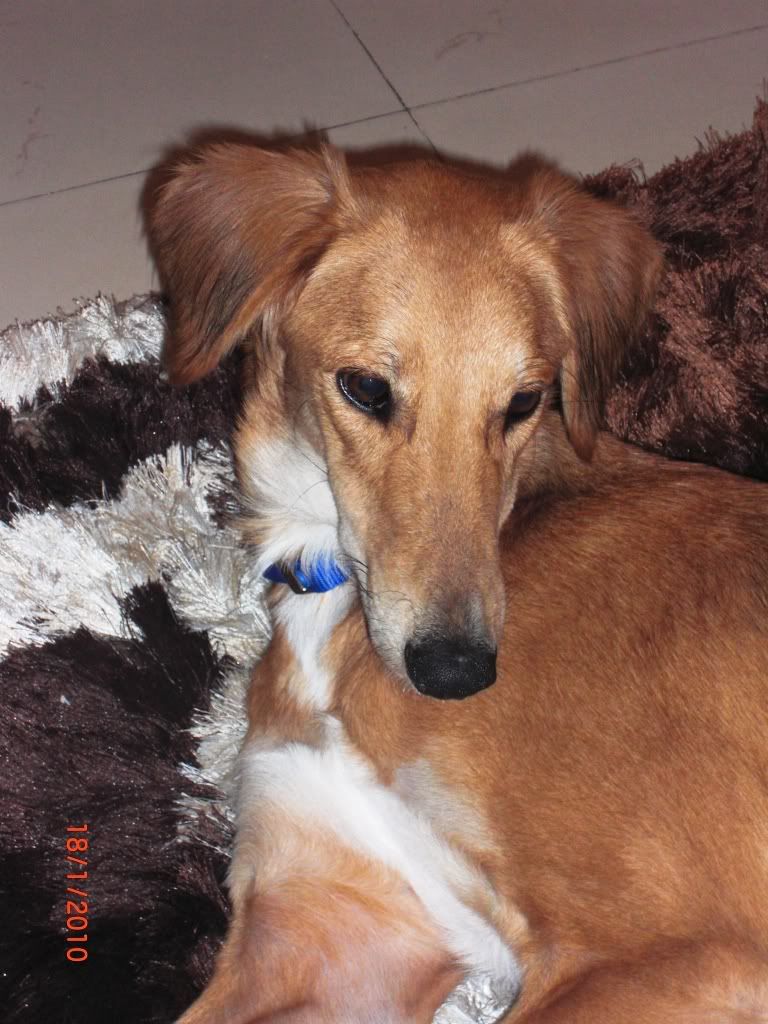Pet Wellness - Lead Poisoning in Dogs
Dog wellness advice on the chat today is with regards to lead poisoning in dogs. Lead toxicity or lead poisoning is medically known as Plumbism, and refers to poisoning due to ingestion or inhalation of products containing lead. When lead based paint is on the walls its fine, but when it is disturbed, causing dust and chips of paint to fall to the ground, this is where the problem starts. Dogs especially will ingest pieces of paint - particularly puppies. The dust from the moving and scraping of the paint settles in the pet’s fur and between his toes as well as is inhaled through his nose. This is one of the more common causes of lead poisoning in dogs, when a home is renovated or newly painted.
Paint produced prior to 1977 contained high levels of lead and some companies today are still using this paint on children and pet products. Although the Consumer Product Safety Commission checks the safety of all toys for humans and enforces a federal standard for lead in paint for children's toys, there is not an organization that regularly tests animal toys nor is there a standard for lead in pet toys. So pet owners need to be vigilant in ensuring their pets are out of harms way when renovating their home. However it isn't just paint that can cause lead poisoning in dogs or other pets.
Lead poisoning or lead toxicity can come from the following;
1. Paint, or the disturbance of paint due to re painting or renovations
2. Lead weights used as sinkers on fishing poles
3. Lead pellets and shot for use in guns
4. Household items such as drapery weights, linoleum, rug padding, and foil from the tops of wine bottles
5. Automotive parts such as batteries, wheel weights, leaded gasoline and discarded oil from cars using leaded gasoline
6. Construction materials such as solder, putty and caulking
7. Plumbing and roofing materials
Puppies are more likely to ingest materials containing lead because of their chewing, playful nature and their need to get into just about everything.
Dogs are more likely than cats to eat lead containing objects and younger animals absorb larger amounts of lead than older animals. In pregnant animals the babies are affected because lead crosses the placenta and is excreted in the mother's milk, causing the fetus to be effected.
Lead poisoning in dogs can cause gastrointestinal problems such as vomiting and diarrhea. It can cause anemia and seizures, and suppress the immune system. Basically if your dog or pet has lead poisoning he is very sick and definitely requires immediate urgent medical attention.
Signs and Symptoms
*Loss of appetite
*Abdominal pain
*Vomiting
*Diarrhea
*Anxiety
*Aggressive behavior
* Muscle tremors
*In coordination
*Weakness
*Seizures
*Blindness
*Deafness
*Behavior changes
*Mental "dullness" (not alert)
*Increased thirst and urinations
*Shortness of breath
*Intolerance for exercise
If you notice any of the above symptoms in your pet, contact your vet immediately.
In order for the vet to properly diagnose your dog he may perform a series of exams such as diagnostic tests, which would include a complete blood count, Serum biochemistry tests to check the liver and kidney function and assess the extent of systemic injury from the lead. Another test would be a blood lead concentration test to determine the amount of lead concentration in your dog's body. Pumping of the stomach and enemas are performed to remove any remaining lead. Surgery may be needed for removal of any object in the stomach. Fluids are administered intravenously to correct dehydration and facilitate urinary excretion of lead. Diazepam Phenobarbital or Pentobarbital are administered to control seizures.
So as you can see, if your dog, God forbid were to get lead poisoning, you are talking about a very involved, sad, uncomfortable, stressful, and costly vet visit. Not to mention the recovery time and medications your dog might be on for a while, as well as frequent follow up visits.
Home Care
Pet natural health care is extremely common and used by pet owners around the world with very successful results, particularly when it comes to common pet illnesses. However in this case there is no natural or home care for lead poisoning in dogs. Seek veterinary care promptly if you suspect your dog has ingested lead-containing materials or shows any of the above signs.
Once you take your pet home from the vet it is vital that you administer medications exactly as directed by your vet and monitor your pet daily. Note down any symptoms that become worse or any new symptoms you notice. Immediately discuss these changes with your vet.
Prevention
Dog wellness means dog owner awareness and a huge part of preventing lead poisoning in dogs is awareness. Being aware of items or chemicals around your home and yard that contain lead and making sure they are out of your dogs reach - keeping in mind any special skills your dog may have either in his breed or owner taught. If you can remove all sources of lead from your home and garden this would be the best way of prevention. Keep your dog away from any renovation that might be going on in your home, and away from discarded materials. Keep your dog away from your garage if you know you are storing lead containing materials. It is also important to make sure dog toys and bowls are lead free. Never underestimate your dog. Assuming your dog won't get into things because he is behaved, out of the puppy stages, or simply isn't bothered could cost you to have a very sick dog. Don't take any chances and keep any toxic materials well away from your dogs reach - at all times.
Dog Trivia: An African wolf dog known as the Basenji is the only dog in the world that cannot bark.
Subscribe to:
Post Comments (Atom)





















































Informative and well-written post. Thank you for sharing some good information.
ReplyDeleteCheers!